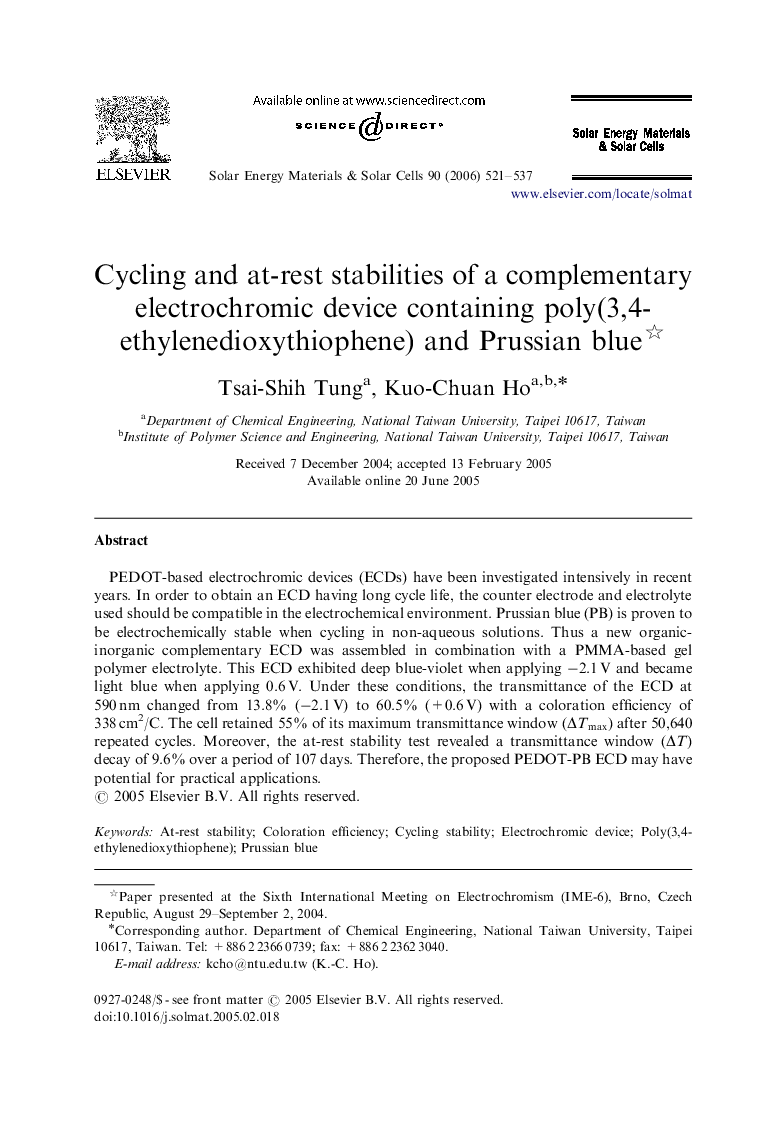| Article ID | Journal | Published Year | Pages | File Type |
|---|---|---|---|---|
| 80867 | Solar Energy Materials and Solar Cells | 2006 | 17 Pages |
PEDOT-based electrochromic devices (ECDs) have been investigated intensively in recent years. In order to obtain an ECD having long cycle life, the counter electrode and electrolyte used should be compatible in the electrochemical environment. Prussian blue (PB) is proven to be electrochemically stable when cycling in non-aqueous solutions. Thus a new organic-inorganic complementary ECD was assembled in combination with a PMMA-based gel polymer electrolyte. This ECD exhibited deep blue-violet when applying −2.1 V and became light blue when applying 0.6 V. Under these conditions, the transmittance of the ECD at 590 nm changed from 13.8% (−2.1 V) to 60.5% (+0.6 V) with a coloration efficiency of 338 cm2/C. The cell retained 55% of its maximum transmittance window (ΔTmaxΔTmax) after 50,640 repeated cycles. Moreover, the at-rest stability test revealed a transmittance window (ΔTΔT) decay of 9.6% over a period of 107 days. Therefore, the proposed PEDOT-PB ECD may have potential for practical applications.
